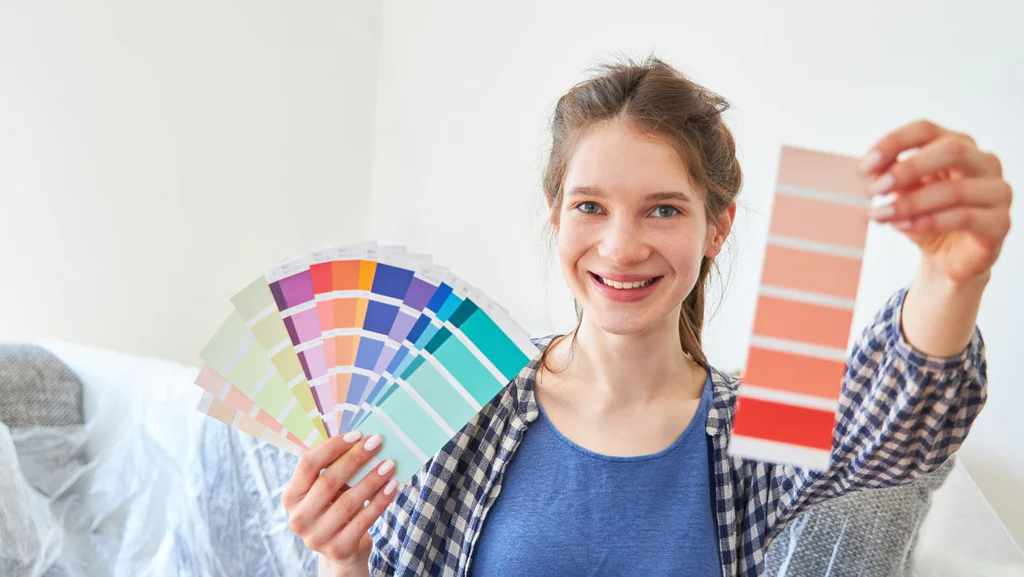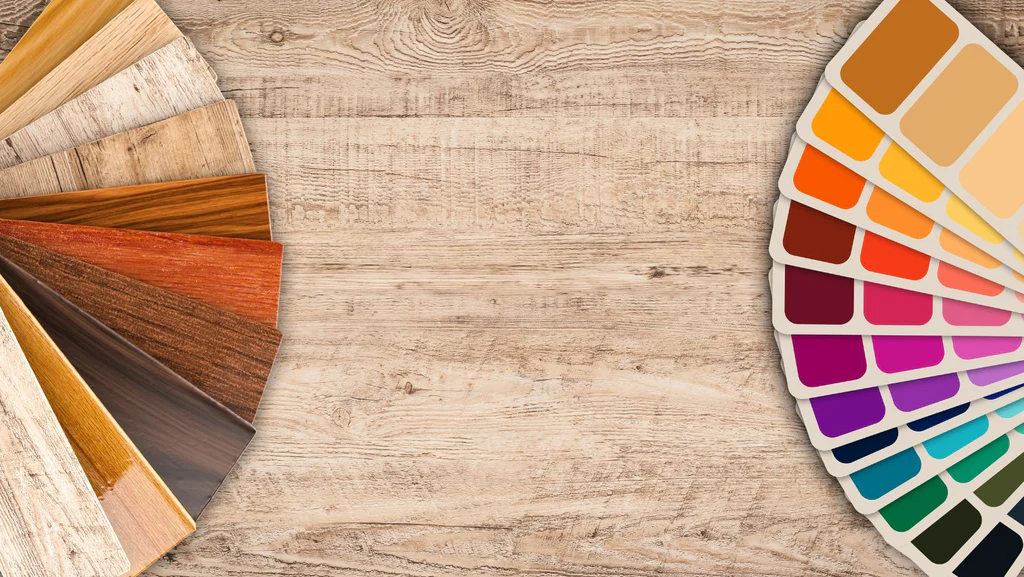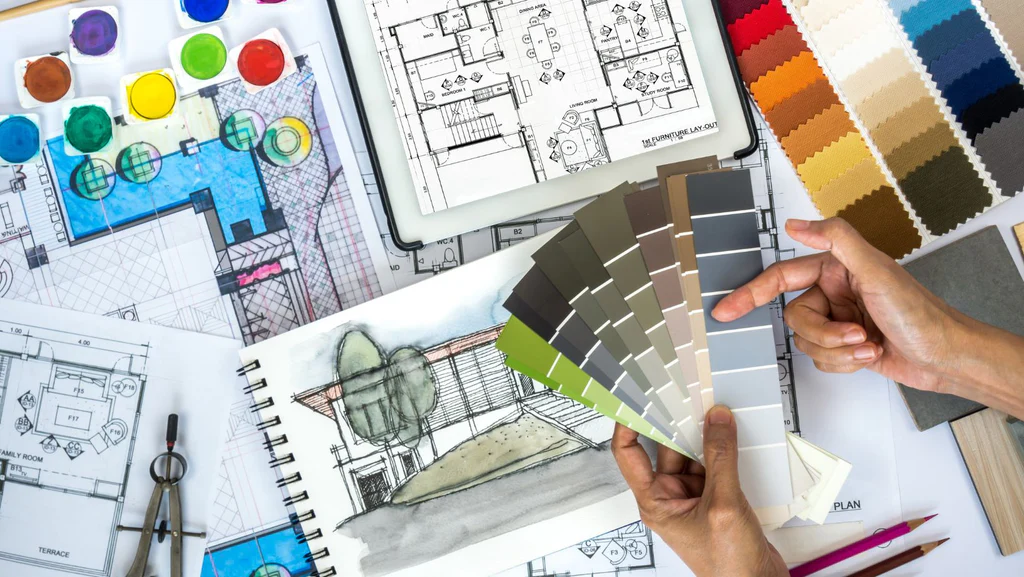Are you starting an interior design project and trying to decide on a color scheme? Whether you're working on your home, office, or any commercial space, choosing the right colors is one of the most important steps. With so many shades and combinations available, it can be overwhelming to pick the perfect palette. But don't worry! In this post, I’ll share some essential tips that will help simplify your process and allow you to create a visually appealing space that reflects your style and personality.

What is Color Theory?
Color theory is a fascinating field that explores how colors interact with each other and how they affect our emotions and perceptions. It includes concepts like the color wheel, hue, saturation, and brightness. Understanding these elements can help you make more intentional and impactful design choices. Colors have the power to inspire, calm, or even energize a space, making them a vital part of any interior design project.

Color Theory Basics for Interior Design
- The Color Wheel: The color wheel is a fundamental tool in design. It consists of 12 colors arranged in a circle. Primary colors (red, blue, yellow) form the base, while secondary colors (green, orange, purple) are created by mixing two primary colors. Tertiary colors come from mixing a primary and a secondary color.
- Color Harmony: This refers to how colors work together in a space. There are several types, such as monochromatic (different tones of the same color), complementary (colors opposite each other on the wheel), analogous (colors next to each other), and triadic (three evenly spaced colors).
- Mood & Emotion: Different colors evoke different feelings. Warm tones like red and orange can create a cozy atmosphere, while cool tones like blue and green promote calmness. Bright colors add energy, while muted tones offer sophistication.
- Lighting: Lighting dramatically affects how colors appear. Natural light brings out true colors, while artificial light can shift hues. Always test your color choices under different lighting conditions.
- Texture: Textures also influence color perception. Rough textures may give a more natural feel, while smooth surfaces reflect light differently, altering the way colors look.

Tips for Using Color Theory to Choose a Color Palette
- Start by picking a color you love. It could be based on a piece of furniture, artwork, or even a favorite item in your room.
- Use the color wheel to find complementary or analogous colors that work well together.
- Try the "dark to light" approach: darker colors for floors, medium tones for walls, and lighter shades for ceilings to create depth and openness.
- Don’t shy away from neutrals like gray or beige—they’re versatile and pair well with bold accents.
- Follow the “rule of 60-30-10â€: 60% main color, 30% secondary, and 10% accent for balance and visual interest.
- Warm and cool tones can coexist beautifully—try pairing warm honey tones with soft grays for a balanced feel.
- Monochromatic schemes are great for small spaces. Use different shades of the same color to add depth without clutter.


In the end, choosing the right color palette can be challenging, but it's all about balance, contrast, and personal expression. Don’t be afraid to experiment and trust your instincts. With a bit of guidance and creativity, you can transform any space into something truly special.
Laser for Atmospheric Exploration
Atmospheric Exploration is a method of measuring distance. It irradiates the target with a pulse Laser and measures the reflected pulse with a sensor.Different laser return time and wavelength can be used to make digital 3d representation of the target.The atmospheric exploration is now used for light detection and ranging. Atmospheric exploration is sometimes called 3d laser scanning, which is a special combination of 3d scanning and laser scanning.It has ground, air and mobile applications.
Laser is commonly used to make high-resolution maps and has applications in geodesy, geology, archaeology, geography, geology, geomorphology, seismology, forestry, atmospheric physics, and laser surveying.The technology is also used to control and navigate some self-driving cars.
Features
â– CNI provided high reliability lasers
â– All the necessary accessories can be provided
â– Easy to install and maintain
â– Customized solution can be provided upon request
Accessories





Beam Expander
Power Meter
Laser Display Card
Pulse Probe
Laser Goggles
Applications:
1.System of detecing Aerosol

The absorption and scattering of Aerosols to sunlight will greatly
change the atmosphere system. Aerosol testing provides important
data to the study of global warming and pollution of the environment.
CNI provides lasers for the system of detecting Aerosol based
on Mie scattering theory.
2. System of detecting the atmospheric temperature
Detection of atmospheric temperature is important to the analysis
atmospheric dynamics. At present, the method of measuring middle
by lidar is very effective.
CNI provides lasers for detection system of the atmospheric

of weather forecasting, atmospheric environment and process of
atmosphere temperature is rare, so observing stratospheric temperature
temperature based on Rayleigh scattering theory.
Laser Ranging Device,Atmospheric Exploration, Laser Detector,Laser Range Meter
Changchun New Industries Optoelectronics Technology Co., Ltd. , https://www.cnioptics.com
